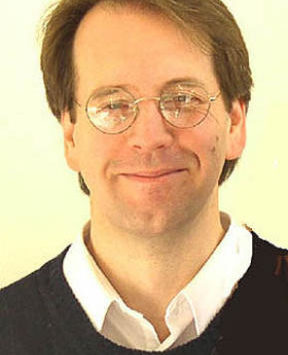Recently I met with the economic development director for a smaller city in the south Puget Sound who expressed a strong interest in building a huge city wide Wi-Fi network. The reason stated to build this free public wireless network is to enhance the image of the city to new potential businesses and high-income citizens.
This city is reinventing itself by doing a massive model of its downtown business and retail core so it can become more attractive as a retail and employment core, thus attracting more retail dollars and jobs to the local community.
Studies are showing that residents of small cities would prefer to live, work and shop in their local home community.
Smaller cities typically havent really had strong employment bases or retail sectors. Most smaller cities don’t have larger shopping malls, but larger cities that are snarled with congested traffic have them. The thing that is starting to hurt these giant malls is that they are often congested with traffic and require driving a distance from the smaller city residential communities.
People want to stay closer to home and don’t want to fight the congestion of people and traffic to get to the large major malls. This is driving up the demand for smaller city or community shopping malls.
The other major impact will be the continued growth of online commerce as we are seeing the retail promise of the dot-com e-tailer boom times starting to come true.
High-speed cable and wireless Internet has the ultimate ability to make the world smaller and more globally connected while at the same time resulting in less of a real need to travel much from our local home communities for work or family life.
This growing traffic congestion problem in and around our major cities is starting to put pressure on small residential cities to become more self-sufficient with all needed shopping and lifestyle amenities within walking distance. This is because people are getting very tired of delays and congestion.
I believe high-speed Internet cable and broadband wireless access is a big part of filling this need.
Another driving factor is a general growing feeling that the world outside of our close communities is dangerous to us because of the risk of terrorism, deadly viruses and random violence.
I believe that all of these factors are playing a large part in the growing importance of the Internet and general community data networks.
The next major area of impact is the combination of wireless Internet and wireless access to locally based services and information that will cause these community-based wireless networks to really have a positive impact on our lives in our local home communities.
The other major area of interest by smaller cities is the instant data connectivity to field services like police, fire and city maintenance crews.
In a few years we will also see more Wi-Fi and WiMax networks as these types of networks grow in size and enable high-speed city wide wireless connectivity to city-related content on what is being called Community Wireless Networks (CWN). These networks are similar to the growing number of underground municipal or city owned fiber optic networks that cities are now building all across the U.S.
The big difference between a fiber optic network and a wireless network is speed of deployment and cost. Low relative cost and economic development are the key drivers for city-owned wireless networks. Wi-Fi or the more expensive WiMax networks can cover fairly large areas for very low cost compared to very expensive fiber networks.
It is not a land grab anymore, but a grab for wireless air space that will count the most in just a few short years. Those cities that are just starting to build fiber networks may be too late to the game to compete.
Rob Greenlee is co-host – along with his wife, Dana Greenlee, who normally pens this column – of the WebTalkGuys Radio Show, a Tacoma-based nationally syndicated radio and Webcast show featuring technology news and interviews.
WebTalkGuys Radio
This Saturday, July 3, WebTalk Radio show guests include local tech journalist and blogger Mitch Ratcliffe talking about future Internet trends discussed at the recent Supernova tech “think tank” conference. Also, Opera browser CEO Jon von Tetchner will call from Norway to explains the new features in Opera.coms browser upgrade. WebTalk Radio is heard at 11 a.m. Saturday on KLAY-AM (1180) and 10 p.m. Tuesday on KVTI-FM (90.9).
This weeks Internet news tips
U.S. Government says not to use IE Browser until Microsoft fixes major security holes
The U.S. government’s Computer Emergency Readiness Team (US-CERT) is warning Web surfers to stop using Microsofts Internet Explorer (IE) browser. They recommend the use of alternative browsers because of significant vulnerabilities in technologies embedded in IE. Microsoft has invested heavily to add secure browsing technologies in the coming Windows XP Service Pack 2.
Apple takes search beyond Windows
At its WorldWide Developers Conference this past week, Apple CEO Steve Jobs talked about its upcoming operating system, Tiger, due out in early 2005. This is about a year before Microsofts new Longhorn is scheduled for release. Tiger is expected to include an improved search function.
Study Show 99 percent of spam sent from just five countries
Commtouch, which says it analyzed hundreds of millions of unsolicited e-mails, said about 55 percent of spam messages originated in the United States, while slightly more than 73 percent of them referred recipients to Websites hosted in China. China, South Korea, the United States, Russia and Brazil host more than 99 percent of all Websites mentioned in spam, according to Commtouch. The adoption in the United States of a federal anti-spam law, last years Can-Spam Act, has done little to deter spammers, Commtouch found. The number of unique spam outbreaks per day shot up to 500,000 by the end of June, from 350,000 at beginning of January.






